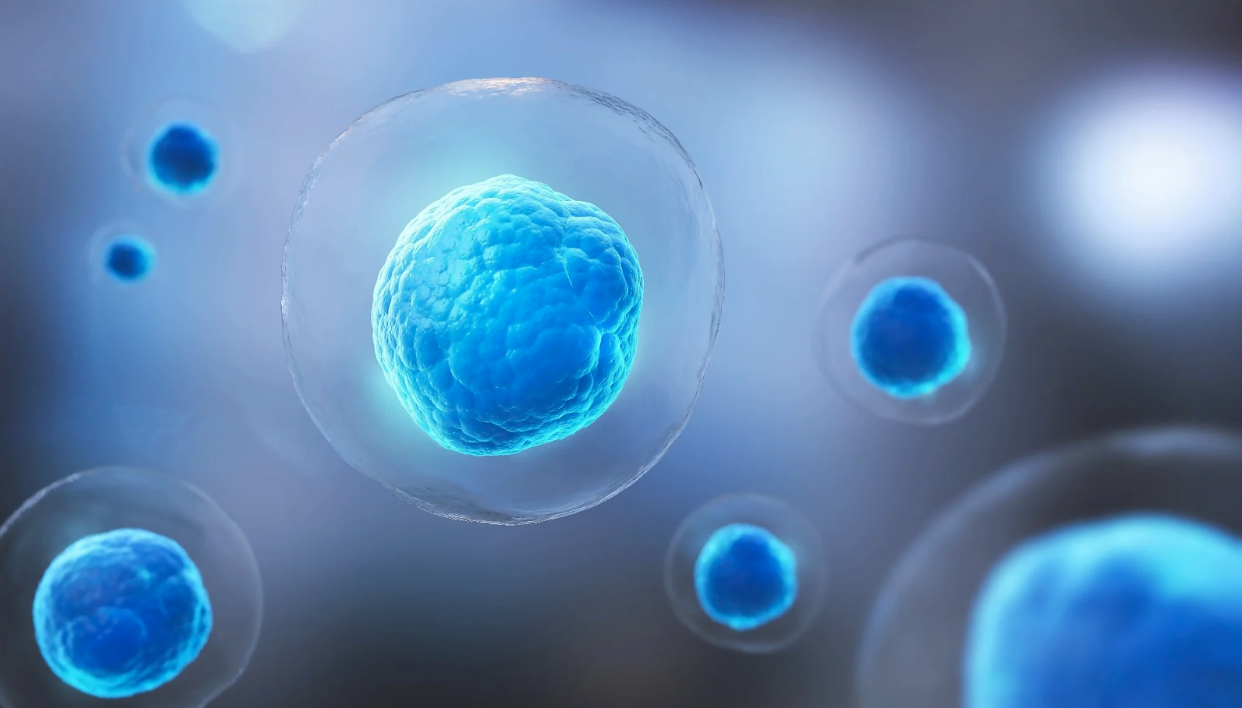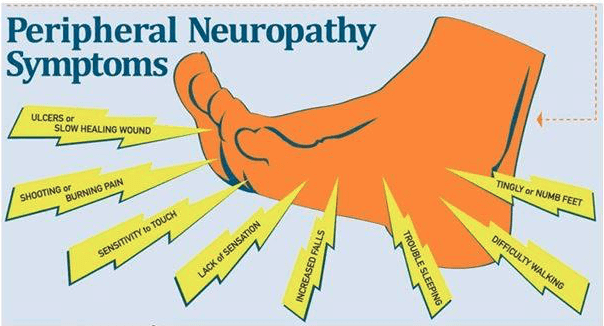
Maintaining a proper bone density is one of the most important factors to a patient’s long term health and quality of life. Generally as we age, bone mass and density goes down over time. The body becomes less proficient at creating new bone. There are some medical conditions that cause patients to lose bone at a faster rate as compared to normal patients. Paget’s disease is a bone-density related disease where the bone cells do not function properly, which results in the gradual loss of bone density. The bone formation process does not work as intended, which is not well understood.
Paget’s disease is one of the most common bone diseases in the world. The condition affects between 1.5 and 8 percent of the population, with patients of British descent being most likely to suffer from the condition. There are currently about 1 million patients with Paget’s disease in the United States, but it is likely that there are patients who are undiagnosed.
Paget’s disease generally does not affect every bone in the body, but the spinal cord is often affected by this condition. When the spinal cord is affected, there are a number of complications that can arise. Patients can suffer from complete paralysis and a lower quality of life when they develop this condition.
Treating bone density has always been an extremely difficult task for the medical community. Creating bone mass and density is a very complicated process that is not completely understood, which is why treating it is so difficult. Patients with Paget’s disease may be frustrated with conventional medical options
Stem cells may have the ability to treat Paget’s disease by targeting the underlying causes. Patients with this condition may be able to improve their condition and ability to create bone through stem cell therapy. Before we jump into stem cell therapy, let’s discuss Paget’s disease and its implications to patients.
What Is Paget’s Disease?
Paget’s disease is named after Sir James Paget, who is considered one of the founders of scientific medical pathology. Originally, the medical community believed that Paget’s disease was the result of inflammation. Now, the medical community understands that there is a malfunction in the way that a bone creates new bone, which causes the condition.
There are two types of bone cells that are responsible for the bone creation and destruction process, osteoblasts and osteoclasts. When bones are functionally properly, there is a constant regenerative process where osteoclasts break down old bone, while osteoblasts create new bone to replace the old bone. A healthy patient will have a balanced process, where the bone replaced is at least equal to the bone that is destroyed.
When a patient has Paget’s disease, this balance is thrown off. The osteoclasts break down bone at a faster rate than normal. This causes the osteoblasts to work even harder at creating new bone, which can cause complications. The newly formed bone formation is generally weaker than other bones and may form incorrectly.
The structural, microscopic changes to the bone affects the long-term health of the bone. Because the bone cannot keep regenerating new bone as the body breaks down old bone, the bone density will slowly decrease in the affected area over time. At first, patients may notice no symptoms or very mild symptoms. If no medical intervention is performed, then the bone mass will continue to deplete, which can lead to more severe symptoms and complications.
The condition does not affect every bone in the body, but primarily targets certain bones. Paget’s disease cannot spread from bone to bone, it will only develop and affect the bone where it is located. That is different from some of the other bone-density disorders.
Researchers do not fully understand what causes Paget’s disease, which can frustrate patients. Most people want to understand why they developed a certain disease or condition. Not having a full understanding of their condition can make a patient feel hopeless. There are some factors that are more common in patients who are suffering from Paget’s disease.

Genetics
In approximately 15% to 30% of cases, there is a family history of the disease. Researchers have found some genes that may be responsible for the development of the condition. These genes may work in a few different ways in order to create the perfect storm where the condition can flourish. The medical community does not fully understand how these genes contribute to the development of the disease.

Viruses
Another potential cause of Paget’s disease is a virus. Some researchers have found that patients who had measles in their childhood are more likely to develop the condition. Measles may have the ability to alter the body’s bone formation functions, which can affect how bone formation occurs. The virus may attack certain cells in the bone, which can prevent the proper formation of bone.

Paget’s Disease Complications
Due to the chronic nature of this condition, there are a number of complications that can arise. The disease is mostly common in patients that are over the age of 55, but anyone can develop the condition.

Fracture
One of the most common complications of Paget’s disease is a bone fracture. When a patient has Paget’s disease, their bones will be weaker and more susceptible to breaks and fractures. Extra blood vessels in the bone can cause the bones to bleed more during surgery to repair breaks and fractures.

Arthritis
Another common complication of Paget’s disease is arthritis. Bones that are misshapen can cause additional stress on other bones in the body. Some patients may need to be aware that this is a potential complication.

Heart Failure
One of the rarer complications of the condition is heart failure. A patient’s heart will have to work harder to pump blood to the affected areas of the body. The higher workload may be too much for some patients, which can lead to heart failure.

Bone Cancer
Patients may develop bone cancer, but it occurs In less than 1% of Paget’s disease patients. Researchers are not entirely sure how cancer develops, but it likely occurs due to the bone growth that occurs from the condition.

Current Treatments For Paget’s Disease
Patients with Paget’s disease have a few treatment options once the disease progresses beyond a certain point.

Exercise
Exercise encourages the body to create new bone. Joint mobility will also improve through various movements. Exercise will also help the patient keep weight down, which can cause potential complications. Patients should discuss any exercise program with their medical professional or physical therapist before starting. Patients may be able to improve their quality of life with a customized treatment exercise plan.

Medication
The medical community has been able to develop some medications that are targeted for Paget’s disease. Bisphosphonates is a group of medications that is aimed at treating the osteoclasts and osteoblasts. This drug works by inhibiting the formation of additional osteoclasts in the bone. Patients have found that they can generally manage their symptoms with the use of this type of medication. Patients will have to have regular checkups to ensure that the condition does not worsen.
Some patients with mild forms of Paget’s disease can manage their symptoms through over-the-counter painkillers. They may not have to take any more serious medications in order to deal with their condition. Patients with the condition can also take calcium and vitamin D supplements in order to encourage healthy bone growth.
Surgery
There is no surgical operation to treat the underlying causes of Paget’s disease. Surgery is generally only performed when there is a complication from the condition. Patients may need to receive surgery when they fracture a bone or to correct a bone that has grown improperly. If a patient receives treatment early enough in their diagnosis, surgery can generally be avoided.
Unfortunately, there is no cure for Paget’s disease. Patients who do not respond to medications or other treatments, will continue to suffer. The medical community is looking at a number of new treatments in order to battle Paget’s disease and other bone-related conditions. Stem cell therapy may offer new hope to patients that are struggling with the condition.

Stem Cell Therapy For Paget’s Disease
Stem cells have been a beacon of hope for patients who have run out of treatment options. The medical community has just started looking into utilizing stem cells for bone density diseases, such as Paget’s disease. There are a number of reasons why stem cells may hold the key for a Paget’s disease treatment. Stem cells have attractive properties that can help patients.
Stem cells have innate regenerative capabilities, unlike other treatment options. A stem cell can be thought of as a blank canvas. The body can paint whatever on the canvas, which is how stem cells turn into various cells in the body. Certain proteins in the stem cell may be responsible for which type of cell a stem cell transforms into. The body may be communicating with the proteins in the stem cell and telling the stem cell to differentiate into a certain cell.
This can be beneficial for patients with Paget’s disease, as the body can tell stem cells to transform into new bone cells. Additionally, stem cells release a number of healing factors that encourage the body to repair itself. Stem cells may be able to help bones change their core structure and replace cells that are not performing as they should.
Due to the fact that Paget’s disease is a localized disease that does not spread from bone to bone, it may be easier to target the affected bone with stem cell injections. Patients can receive a dose of stem cells into the affected bone, which can encourage the development of new bone. The newly formed bone cells can help patients avoid complications.
Stem cell therapy has been shown to be safe for countless conditions and diseases. Due to the innate nature of stem cells, the immune system does not reject stem cells when they are introduced into the body. The various systems in the body will utilize the stem cells in various ways that are not fully understood.
Stem cells are also extremely easy to administer. Patients can receive a stem cell treatment in a matter of minutes and walk out of the medical facility. It is clear that stem cell therapy has a number of attractive properties that could improve the outcome of a patient who has Paget’s disease.
Researchers all over the world are looking into the possibility of stem cell therapy for various bone-related conditions, including Paget’s disease. There is some promising research that showcases the potential of stem cell therapy.
Promising Research
Researchers have been interested in utilizing stem cells to encourage the body to create new bone for some time. Stem cell research is rapidly progressing and creating new hope for patients. The medical community is finally attempting to develop stem cell therapies that can increase bone density in patients that need to grow new bone.
A relatively new study found that a patient can use their own stem cells in order to grow new bone. Researchers at the University of Bergen are hoping that patients can grow their own bone in their jaws. There are countless patients who need new jawbone each day throughout the world. They have lost bone in the jaw either through a disease or trauma.
A group of 150 patients will receive a biomaterial that is made partially from their stem cells. One study that involved 11 patients was already successful, but they want to ensure that this process works on all patients. Stem cells were collected from the hip of the patient. The stem cells would then be cultured in a laboratory and then mixed with other biomaterials. The entire structure would then be implanted on mandible bone ridges to increase their volume. The bone graft would then be implanted into the area where bone needs to be grown.
After five months, the patients will be evaluated to find the volume of the bone that was grown. Some of the bone will also be analyzed to determine its strength compared to the rest of the bone in the jaw. The researchers are hopeful that patients will show increased bone growth as compared to typical patients.
Patients with Paget’s disease could receive a bone graft improved with stem cells in order to help the body grow new bone. A combination of stem cells and other treatment methods could help patients who suffer from this condition. Stem cells could encourage the body to grow new bone and increase bone density.
Researchers at John Hopkins Medicine were interested in investigating stem cells for their use in fighting bone disorders and improving surgical outcomes. We discussed earlier that certain proteins in stem cells may trigger the stem cells to differentiate into certain cells. Medical treatments could be developed by focusing on that protein in stem cells to encourage the stem cell to create new bone tissue.
The researchers found that a certain protein in stem cells in the body can push the stem cell to develop into either a bone cell or a fat cell. The protein, known as WISP-1, is likely responsible for the development of new bone in the body. In order to test this hypothesis, they engineered stem cells and turned down the WISP-1 protein. When the protein was turned down, the stem cells were much more likely to turn into fat cells.
The next step was to increase the amount of WISP-1 present in the stem cell. They found that a stem cell was 42% more likely to become a bone cell with an increased presence of this protein. The John Hopkins Medicine researchers then wanted to test the increased level of protein on a group of rats who underwent a spinal fusion.
A spinal fusion occurs when two or more vertebrae are fused together in the spinal cord. This procedure requires a massive amount of bone generation. Testing the recovery of the rats and the success of the operation would give researchers more insight into how stem cells can encourage the body to create new bone cells.
All of the rats in the experiment underwent a spinal fusion. One group of rats was injected with stem cells with an elevated level of the WISP-1 protein, while the other did not receive an injection of stem cells. The researchers then observed the rats’ spinal tissue and bone formation over the course of four weeks.
The group that received stem cells had begun to form new bone and were able to fuse the vertebrae together to form a singular bone. The rats who did not receive stem cells did not show any successful bone fusion during the four week observation period. Researchers are hopeful that they can utilize the protein in order to encourage stem cells to create new bone, instead of other cells.
If stem cells are introduced into the proper place in the bone, then those stem cells may develop into certain bone types and encourage the body to generate new bone. Patients who are suffering from low bone density could receive stem cells and increase their bone density. This may have the potential to solve the underlying problem of Paget’s disease.
It looks more hopeful than ever that stem cells will play a role in the treatment of Paget’s disease. Patients may one day go into their doctor’s office to receive an IV of stem cells in order to combat the condition. Stem cells may help these patients improve their bone density in the affected areas of their body.
The BioXcellerator team has worked with patients who suffer from all types of musculoskeletal disorders. We independently assess each patient and develop a customized treatment plan in order to address their unique needs. Our medical team will always recommend the best course of treatment, whether that involves medication and exercise or stem cell therapy.
Our team is obsessed with developing the highest quality regenerative medicine treatments for our patients. We are constantly researching stem cells in order to push the future of stem cell therapy forward. In order to accomplish this task, we have developed a new class of stem cells that we like to call ‘golden cells.’
Golden Cells
Quality is a potential issue that some patients have experienced when receiving stem cell therapy. Unfortunately, not all stem cell clinics have proper quality control systems and processes in place to ensure that their patients receive high quality stem cells. There was even one instance where a stem cell clinic used dead stem cells in their treatments. BioXcellerator is aware of this issue that could cause some doubt in potential patients.
In order to develop better treatment options, our team gathered up the best stem cell quality standards that exist. We developed our own set of rigorous standards and regulations based on our own research and currently available material. This process more or less helps our team vet stem cells based on their characteristics and therapeutic potential.
We utilize this process to eliminate stem cells that do not have the highest therapeutic potential for our patients. We are able to improve the stem cells that we use in our treatments and we are left with a group of stem cells, which are known as golden cells. This group of stem cells is the 1% of stem cells.
Patients will not have to worry about the quality of stem cells when they receive golden cells. Our team believes that godlen cells have more potential to help patients regrow new bone as compared to conventional stem cell therapies. The heightened therapeutic potential should encourage the development of new bone and help fight the underlying cause of Paget’s disease.
Reach out to your healthcare provider today to learn more about potential treatment methods for Paget’s disease. If conventional treatment methods do not work, some patients may respond to stem cell therapy. A patient could prevent further bone density loss and improve their overall quality of life.

